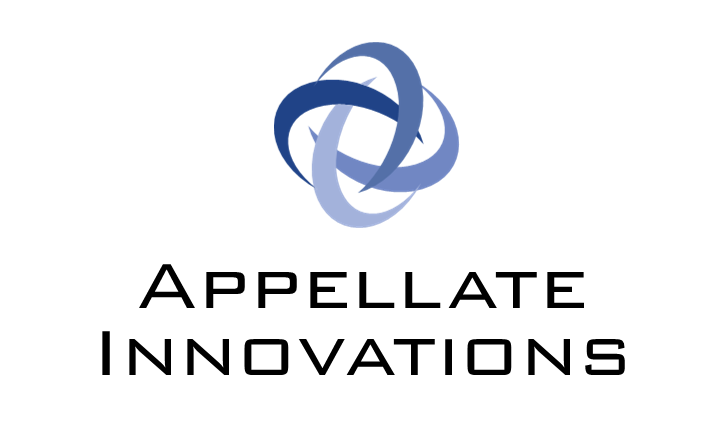08 Dec Changes to the Federal Rules of Appellate Procedure Effective December 1, 2021
 (6 minutes to read) Amendments to the Federal Rules of Appellate Procedure (FRAP) took effect on December 1, 2021. The changes affect Appellate Rules 3 and consequently Rule 6 and Forms 1 and 2. Please see House Document 117-30 for the full language of the amendments.
(6 minutes to read) Amendments to the Federal Rules of Appellate Procedure (FRAP) took effect on December 1, 2021. The changes affect Appellate Rules 3 and consequently Rule 6 and Forms 1 and 2. Please see House Document 117-30 for the full language of the amendments.
A notice of appeal functions as the appellant’s notice to the parties and the court that it intends to appeal an order or judgment and frames the scope of appellate review. The new rules provide appellants new protections against unintentionally waiving issues on appeal or having the appeal dismissed due to defects in the notice. The rule governing the filing and contents of a notice of appeal being taken as a right, FRAP 3, was most affected by the changes. Please see our breakdown of the amendments below.
Please note: Stricken text represents parts of the rule that were omitted;
Bold text reflects the new language; and
Italicized text provides some context for the changes:
FRAP 3(c) Contents of the Notice of Appeal.
(1) The notice of appeal must:
(A) specify the party or parties taking the appeal by naming each one in the caption or body of the notice, but an attorney representing more than one party may describe those parties with such terms as “all plaintiffs,” “the defendants,” “the plaintiffs A, B, et al.,” or “all defendants except X”;
(B) designate the judgment, order, or part thereof being appealed; and designate the judgment-or the appealable order from which the appeal is taken; and
An Appellant does not need to identify orders that merge into a designated judgment or appealable order, avoiding unintentionally narrowing the of the scope of the appeal.
(C) name the court to which the appeal is taken.
(2) A pro se notice of appeal is considered filed on behalf of the signer and the signer’s spouse and minor children (if they are parties) unless the notice clearly indicates otherwise.
(3) In a class action, whether or not the class has been certified, the notice of appeal is sufficient if it names one person qualified to bring the appeal as representative of the class.
(4) An appeal must not be dismissed for informality of form or title of the notice of appeal, or for failure to name a party whose intent to appeal is otherwise clear from the notice. The notice of appeal encompasses all orders that, for purposes of appeal, merge into the designated judgment or appealable order. It is not necessary to designate those orders in the notice of appeal.
This codifies the merger doctrine wherein any interlocutory decisions fall under the final judgment and are therefore reviewable in an appeal from the final judgment without the need to designate each order being appealed.
(5) Form 1 in the Appendix of Forms is a suggested form of a notice of appeal. In a civil case, a notice of appeal encompasses the final judgment, whether or not that judgment is set out in a separate document under Federal Rule of Civil Procedure 58, if the notice designates:
(A) an order that adjudicates all remaining claims and the rights and liabilities of all remaining parties; or
(B) an order described in Rule 4(a)(4)(A).
This amendment affords that a notice of appeal automatically includes an appeal of the final judgment even if not expressly set out under FRCP 58, if it includes 1. an order that resolves any remaining claims and parties or 2. an order that resolves a post-judgment motion under FRAP 4(a)(4)(A).
(6) An appellant may designate only part of a judgment or appealable order by expressly stating that the notice of appeal is so limited. Without such an express statement, specific designations do not limit the scope of the notice of appeal.
This amendment allows the appellant to limit the scope of the appeal by expressly stating the part of a judgment or appealable order and emphasizes that without providing that specificity, the scope of the appeal is not limited.
(7) An appeal must not be dismissed for informality of form or title of the notice of appeal, for failure to name a party whose intent to appeal is otherwise clear from the notice, or for failure to properly designate the judgment if the notice of appeal was filed after entry of the judgment and designates an order that merged into that judgment.
This amendment provides protection from dismissal of a notice of appeal due to technicalities, providing that as long as a notice of appeal is filed after entry of judgment and designates an order that merged into that judgment the appeal may not be dismissed.
(8) Forms 1A and 1B in the Appendix of Forms are suggested forms of notices of appeal.
See revised Notices of Appeal, Forms 1A and 1B.
Other changes to the rules include:
•FRAP 6(b)(1)(B) was changed to reflect the new Notice of Appeal forms. See revised Appellate Forms.
•FRAP Form 1 is replaced by FRAP forms 1A and 1B to reflect the amendments to FRAP3(c) See FRAP Form 1A, Notice of Appeal to a Court of Appeals from a Judgment of a District Court, and FRAP Form 1B, Notice of Appeal to a Court of Appeals from an Appealable Order of a District Court.
•FRAP Form 2, Notice of Appeal to a Court of Appeals from a Decision of the United States Tax Court, was also changed to reflect the amendments to FRAP 3(c).
In summation, the amendments to the Federal Rules of Appellate Procedure that were enacted on December 1, 2021, serve to prevent appellants from unintentionally waiving any rights to appeal, narrowing the scope of their appeal, or even having the appeal dismissed due to defects with the notice of appeal.
If you have any questions about the Federal Rules of Appellate Procedure, and how they apply to your appeal, contact Appellate Innovations. We have worked with attorneys across the country, providing our clients with dependable appellate expertise, responsive service, and the highest quality appellate filing experience. Call 914-948-2240 or 212-461-1308 to speak with Appellate Consultant, Natalia Williamson, or another of our experienced Appellate Consultants today.
The information contained in this blog is provided for informational purposes only. This information should not be construed as legal advice on any subject matter. You should not act or refrain from acting on the basis of any content included in this blog without seeking legal or other professional advice.
Natalia Williamson
Senior Appellate Consultant
APPELLATE INNOVATIONS
1 Barker Avenue, Suite 305
White Plains, NY 10601
Phone: (914) 948-2240






No Comments